Mini Laser Welding Machine
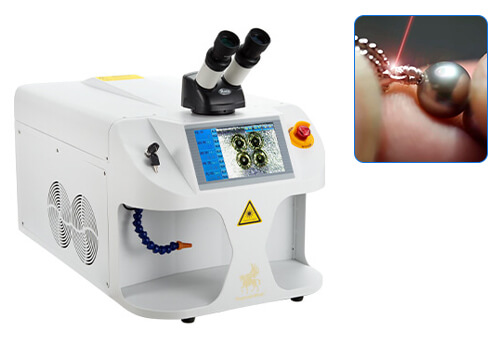
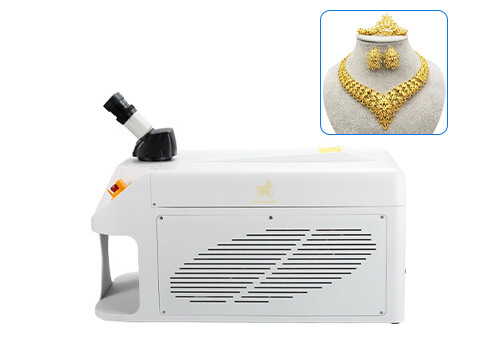
The mini laser welding machine is a compact size jewelry welding machine that is used to weld noble metals together in the jewelry making industry.
The mini laser welder uses an amplified beam of light to produce a solid weld with an invisible spot within seconds. The beam of light emitted from a jewelry laser welder is concentrated, adjusted and controlled by the user.
When adding metal or repairing jewelry using the jewelry welding machine, the same noble alloy is welded. The heat used in the welding process is localized such that the result of welding is seamless or result in no discolouration of the welded spot.
Superbmelt jewelry laser welder for sale is able to weld base metals, karat gold, sterling silver, palladium, platinum, etc.
The mini laser welder allows you to weld continuously while holding precious metal pieces in your hand. Laser welding when compared to soldering is faster, neater and more cost effective for many manufacturing and repair purposes.
| Model | SPB-150WB |
| Wavelength | 1064nm |
| Max output power | 150W |
| Max pulse energy | 80J |
| Pump source | Single lamp |
| Pulse width | 0.1-20ms |
| Pulse frequency | ≤50Hz |
| Aiming and positioning | Microscope + camera system |
| Application | Welding and repairing various precious metal trinkets |
| Host power consumption | ≤5KW |
| Electricity demand | AC220V±5%/50Hz |
| Cooling system | Water cooling + air cooling |
| Dimension | 660x385x435mm |
| Weight | 49kg |
- Superbmelt jewelry welding machine offers a high level of welding accuracy and control. The mini laser welder is so precise and allows you to weld the smallest parts without error or damages.
- The mini laser welder is capable of welding complicated joints. The jewelry laser welding machine allows you to weld dissimilar materials as well as complex areas that would be too difficult to reach using traditional welding methods.
- The mini laser welder requires low heat (only ≤5KW), reducing the distortion of components. Therefore, making the jewelry laser welder a preferred option in welding and repairing precious metals.
- With Superbmelt mini laser welder, you can make repeated and constant weld of jewelries. It is a faster welding technique than other traditional techniques.
- The mini laser welder allows jewelry manufacturers to make high strength welds. There is no need for filler materials to be used during welding. Laser welders provide excellent weld quality and clean processing, which makes it adoptable for use in the medical industry.
- Superbmelt jewelry laser welder makes use of both water cooling and air cooling as the cooling system, which contributes to the welding efficiency of the mini laser machine.
- The mini laser welder is compact size, easy to move and use, this is why it is adopted by the jewelry, medical, electronics, and automotive industries.
- The mini laser welder has an imported ceramic condenser cavity that is both corrosion resistance and high temperature resistance. This welder machine condenser has a lifespan of 8 to 10 years.
- The mini laser welder allows you to aim and position metal parts through a microscope and camera system.

2 years warranty
The warranty for our machine is one year longer than the warranty provided by other factories.

ISO CE SGS approved
Professional certification bodies certify that the machines are of high quality.

Strong service team
We will give response within 24 hours against your problem by our professional engineer.
Why SuperbMelt Mini Laser Welder



Any Question About SuperbMelt Mini Laser Welding Machine
Mini Laser Welding Machine Guide
Mini Laser Welding Machine Introduction
The Mini Laser Welding Machine is a compact device designed for precision metal welding, especially suitable for jewelry manufacturing and repair. It uses a 1064nm wavelength laser focused on the metal surface, delivering high-energy pulses to achieve fast, stable, and nearly invisible welds.
Compared with traditional soldering or electric welding, the Mini Laser Welder offers the following advantages:
High-precision operation: Equipped with a microscope and camera positioning system, it enables accurate welding on very small metal parts.
Low heat input: With power consumption ≤5KW, heat is highly concentrated during welding, preventing deformation or discoloration of the workpiece.
Strong and seamless: Weld joints are firm and require no additional filler materials, leaving a smooth and clean surface.
Efficient cooling: The combined water and air cooling system ensures stable operation for long periods.
Compact and portable: With a weight of only 49kg and a small body design, it is easy to move and use, making it ideal for both small workshops and large factories.
Durability: Equipped with an imported ceramic condenser cavity that is corrosion-resistant and heat-resistant, with a lifespan of up to 8–10 years.
1.1, Early Jewelry Welding Methods
Before the introduction of modern laser welding technology, jewelers relied on traditional soldering and flame-based welding techniques to join precious metals. These early methods involved heating metal parts with a gas torch and using solder (a filler material with a lower melting point than the base metal) to bond components together.
While effective for basic repairs and fabrication, these methods had several limitations:
Visible joints: Solder seams often left marks that required additional polishing and finishing.
Heat damage: The high temperatures could cause discoloration, oxidation, or deformation of delicate jewelry pieces.
Limited precision: Small or intricate parts were difficult to handle, and mistakes could permanently damage the item.
Time-consuming process: Preparing, heating, soldering, and finishing each joint often required considerable labor.
Despite these drawbacks, traditional soldering laid the foundation for modern jewelry fabrication techniques. Over time, jewelers began seeking faster, more accurate, and less invasive methods—ultimately paving the way for the adoption of laser welding machines.
1.2, Development of Laser Welding in Jewelry Industry
The introduction of laser technology into the jewelry industry marked a significant turning point in metal joining techniques. By the late 20th century, advancements in laser optics and control systems made it possible to replace traditional soldering with precision laser welding.
Unlike flame-based methods, laser welding uses a highly concentrated beam of light to fuse metals at the microscopic level. This innovation allowed jewelers to overcome many of the challenges of early techniques:
Minimal heat impact: The laser’s localized energy prevents surrounding areas from overheating, reducing the risk of warping or discoloration.
Microscopic precision: With the integration of microscopes and camera-assisted positioning, jewelers can work on the tiniest prongs, links, and decorative details with unmatched accuracy.
Cleaner results: Laser welds are smooth, seamless, and do not require filler materials in most cases, preserving the purity of precious metals.
Faster workflow: Repairs and customizations can be completed within seconds, significantly improving workshop efficiency.
Today, laser welding has become a standard practice in professional jewelry workshops and manufacturing facilities worldwide. Its ability to repair delicate pieces, customize designs, and produce high-quality results has made it an indispensable tool for modern jewelers.
1.3, Advantages of Mini Laser Welding Machine
The Mini Laser Welding Machine represents a breakthrough in precision welding technology, combining compact design with powerful performance. Compared with traditional soldering or larger industrial welders, it offers several key advantages that make it especially valuable in jewelry manufacturing and beyond:
High Precision Operation
Equipped with a microscope and camera positioning system, the mini welder enables accurate control on extremely small components such as prongs, clasps, and links. Even the most intricate details can be welded without error.Low Heat Input
Operating at ≤5KW, the machine delivers highly localized heat. This minimizes the risk of deformation, discoloration, or damage to surrounding gemstones and delicate designs.Seamless and Strong Joints
Laser welds are firm, clean, and nearly invisible, requiring no filler materials in most cases. The result is a flawless finish that preserves the beauty and integrity of precious metals.Efficient Cooling System
With a combination of water cooling and air cooling, the machine maintains stable performance even during continuous operation, ensuring long service life and reliable output.Compact and Portable Design
Weighing only 49kg, the mini welder is easy to move and install. Its small footprint makes it suitable for workshops of all sizes, from artisan jewelers to large-scale factories.Durability and Longevity
Built with an imported ceramic condenser cavity that is corrosion- and heat-resistant, the system is designed to last 8–10 years, reducing long-term maintenance costs.
In short, the Mini Laser Welding Machine provides speed, accuracy, efficiency, and durability in one compact unit—making it an indispensable tool for modern jewelry professionals.
1.4,Comparison with Traditional Welding
Traditional jewelry welding methods—such as soldering or flame welding—have been used for centuries, but they come with significant limitations. The introduction of laser welding has reshaped the industry by providing a more precise, efficient, and reliable solution.
| Aspect | Traditional Welding (Soldering/Flame) | Mini Laser Welding Machine |
|---|---|---|
| Heat Control | Broad heat zone, high risk of warping, discoloration, and gemstone damage. | Highly localized heat input (≤5KW), protects surrounding areas and stones. |
| Precision | Limited accuracy; small or complex parts are difficult to weld without damage. | Microscopic precision with camera-assisted positioning for delicate components. |
| Weld Quality | Requires filler materials; joints often visible and need polishing. | Produces seamless, strong joints with clean surfaces, no filler required. |
| Speed & Efficiency | Time-consuming process with multiple steps (heating, soldering, cleaning). | Welding completed in seconds; continuous operation possible. |
| Durability | Joints may weaken over time, especially under stress or daily wear. | Strong, long-lasting welds suitable for both repair and new fabrication. |
| Workpiece Safety | High chance of damaging thin or intricate designs. | Safe for fragile components, including fine jewelry and micro-parts. |
In summary, while traditional welding methods still play a role in some settings, the Mini Laser Welding Machine offers unmatched precision, efficiency, and quality—making it the preferred choice for modern jewelry workshops and manufacturers.
What micro laser welding machines are currently on the market
2.1, Desktop Mini Laser Welding Machines
1. Suitable Scenarios
Jewelry manufacturing & repair: Ideal for welding rings, earrings, necklaces, bracelets, and for repairing cracks, holes, or seams.
Precision repairs: Such as watch components, eyeglass frames, and other miniature metal parts.
Small workshops or laboratories: Compact design makes it easy to place on a desktop for daily production or research.
Small-batch production & customization: Perfect for flexible, high-precision personalized manufacturing and repair tasks.
2. Target Users
Jewelers & goldsmiths: Professionals requiring high-precision, seamless welding for fine jewelry.
Jewelry designers & small brands: Teams that need flexible operations and rapid prototyping.
Watchmakers & repair specialists: For fixing intricate micro-components like gears or cases.
Researchers & lab technicians: For experiments involving precision welding of tiny metal pieces.
3. Applicable Industries
Jewelry industry: Welding and repairing rings, necklaces, earrings, and bracelets.
Watchmaking industry: Precision metal component restoration.
Eyewear manufacturing & repair: Welding metal frames.
Electronics: Welding electrical contacts and miniature components.
Medical field: Repairing or modifying small surgical tools and devices.
Automotive & aerospace: Precision welding of small and delicate metal parts.
4. Applicable Metals
Precious metals: Gold, silver, platinum, palladium, etc.
Common metals: Stainless steel, titanium, copper alloys.
Special alloys: Certain high-hardness and precision alloys suitable for laser welding.
2.2, Industrial Mini Laser Welding Machines
Industrial mini laser welders bridge the gap between compact desktop units and full-scale industrial welding systems. They are designed for high-performance needs, offering portability with enhanced power and precision.
Key Features & Functionality
Growing Power Range
Industrial mini welders often start from around 150W and can reach 1.5 kW or more, enabling welding of tougher metals and larger components. For example, the Maven hand-held fiber laser model offers 1500W output with adjustable focal spot and pulse parameters.Flexible Design for Mobility
Many industrial mini units feature wheeled bases and rugged builds for mobile use on the factory floor. These designs support flexible positioning and practical deployment across job sites.
Best-Fit Use Cases
1. Production Workshops & Small Factories
Designed for higher throughput than desktop models, industrial mini laser welders are ideal for medium-scale jewelry production or detailed component manufacturing in electronics and automotive sectors.
2. On-Site or In-Field Welding
Portable hand-held models allow technicians to perform precision welds directly on assembled structures or machinery, especially useful in maintenance, repair, and part correction.
3. Complex Part and Material Requirements
These machines handle dissimilar metal welding and intricately shaped geometry, applicable in crafting bespoke metal components or repairing fine-tuned industrial parts.
Ideal Users & Industries
Jewelry Manufacturers
For high-volume custom or fine-detail jewelry—especially items like handcuffs, watch parts, or fine components where uptime and consistency matter.Electronics & Sensor Industry
For welding miniature parts like sensor housings, connectors, or circuit assemblies where thermal precision is crucial.Automotive Repair & Engineering
Suited for on-the-fly welding of heat-sensitive components, and for areas where traditional welding could cause heat damage.Medical Device Fabrication
Useful for on-site repairs or assembly of surgical tools and small medical instruments requiring clean, minimal-heat joins.
Compatible Metals
These industrial units typically support a wide range of metals, including:
Precious Metals: Gold, silver, platinum, palladium
Ferrous & Non-Ferrous Metals: Stainless steel, titanium, aluminum, copper alloys
Specialty Alloys: High-hardness materials and multi-metal assemblies suitable for fine welding tasks
Summary Table
| Aspect | Details |
|---|---|
| Scenarios | Production workshops, on-site repairs, custom part fabrication |
| Users | Jewelry manufacturers, electronics engineers, automotive/medical technicians |
| Industries | Jewelry, electronics, automotive, medical, precision engineering |
| Metals | Precious metals, stainless steel, titanium, aluminum, copper alloys, specialty alloys |
2.3, Portable Mini Laser Welding Machines
Mobility & Versatility
These handheld units—with lightweight guns connected via fiber-optic cables—offer exceptional portability. They’re perfect for on-site repairs, fieldwork, or multi-station use Repur TechADH Shop.High Precision & Clean Welds
Portable welders deliver focused laser energy, producing precise welds with minimal heat-affected zones (HAZ), reducing distortion and ensuring clean results—especially important for delicate tasks Repur TechADH ShopWRS.Excellent Efficiency
Compared to traditional welding methods (e.g., TIG, MIG), these units offer significantly faster welding speeds, improving productivity and reducing post-weld processing Repur Techdplaser.Material Flexibility
Portable laser welders can handle a wide range of metals—including stainless steel, aluminum, copper, titanium, precious metals, and even dissimilar metal combinations—thanks to precise energy control and small weld zones ADH Shop+1Repur Tech.User-Friendly & Safe
Many models feature intuitive interfaces, preset modes, ergonomic design, and safety features like automatic interlocks and user-friendly controls that make them accessible even for newcomers Repur TechLasaco轻焊.
Best Use Scenarios & Industries
Jewelry & Watch Repair
Ideal for delicate repairs—like prong soldering or micro-welding—without damaging stones or surfaces Repur TechWRS.Automotive & Aerospace Maintenance
Excellent for on-site welding tasks on thin or complex parts (e.g., panels, airframes), where traditional welders are impractical Repur TechWRS.Electronics & Medical Devices
Handy for welding sensitive components, where precision and controlling thermal impact are essential Repur TechWRS.Field & Construction Work
Its portability makes it suitable for installations or repairs in equipment cabins, guardrails, metal furniture, and industrial fabrications outdoors or onsite BaisonADH Shop.
Typical Users
Jewelers & Watchmakers—for fast, aesthetic, and precise repairs.
Mobile Maintenance Technicians—who operate in remote or fixed locations.
Small-Scale Manufacturers & R&D Teams—seeking adaptable tools for prototyping or small batch production.
Industrial Mechanics & Field Engineers—working on repairs where mobility and precision are required.
Applicable Metals & Thicknesses
Portable handheld laser welders reliably work with a broad spectrum of materials:
Precious Metals: Gold, silver, platinum, palladium
Common Metals & Alloys: Stainless steel, aluminum, titanium, copper, brass
High-End or Reflective Materials: Capable of welding materials that reflect or conduct heat like copper and dissimilar metal pairs—with careful parameter control ADH Shop+1.
Thickness ranges typically vary by power level:
Low-power units (300–600W): Up to ~1.5 mm
Mid-power (1000–1500W): Up to ~5 mm
High-power (2000–3000W): Up to ~7 mm, or even double-sided up to ~15 mm ADH Shop.
Quick Summary Table
| Aspect | Details |
|---|---|
| Scenarios | Jewelry/watch repair, on-site/mobile welding, field services, industrial maintenance |
| Users | Jewelers, watchmakers, mobile technicians, small manufacturers, R&D, industrial mechanics |
| Industries | Jewelry, watchmaking, automotive, aerospace, electronics, medical, construction, prototyping |
| Metals & Thicknesses | Precious and common metals; thickness from ~0.3 mm to up to ~7 mm+ depending on power |
Why Soldering Jewelry Requires Equipment
Soldering jewelry requires specialized equipment because of the precision, heat control, and safety needed when working with precious metals. Jewelry pieces are often very small and intricate, so tools like torches, clamps, and soldering blocks help deliver accurate heat without damaging the design. Proper equipment also ensures safe handling of high temperatures and chemicals, improves efficiency, and creates smooth, seamless joints that enhance both strength and appearance. In short, soldering equipment is essential to achieve accuracy, safety, efficiency, and a high-quality finish in jewelry making.
3.1, History of Jewelry Welding
The history of jewelry welding traces back to ancient metalworking techniques where artisans joined metals using heat and alloys. Early methods included simple soldering with tin or gold-based alloys, hammering, and mechanical joining to create decorative and functional pieces. During the 19th and early 20th centuries, advancements in electrical welding and oxy-acetylene torches allowed jewelers to work with more precision and on harder metals. The modern era saw the introduction of laser welding, which revolutionized jewelry fabrication and repair by enabling highly precise, low-heat, and virtually invisible joints, making it ideal for delicate and intricate designs. This evolution reflects the ongoing pursuit of combining artistry with technological innovation in the jewelry industry.
3.2, Metals that Require Precision Welding
Certain metals used in jewelry and high-end applications demand precision welding due to their sensitivity to heat, reactivity, or tendency to deform. These include:
Gold (18K, 14K, and higher purities): Prone to discoloration or melting if overheated.
Silver: Easily oxidizes and can lose luster under excessive heat.
Platinum: Requires high temperature control because of its high melting point and density.
Palladium: Sensitive to heat and requires precise energy input to avoid damage.
Titanium: Difficult to weld with traditional methods; requires focused, controlled heat.
Mixed alloys or thin components: Extremely small or delicate parts that can deform without precise heat application.
Precision welding tools, such as mini laser welders, are ideal for these metals because they deliver localized heat, minimal thermal impact, and strong, clean joints.
3.3, What Equipment is Needed for Jewelry Welding
Jewelry welding requires specialized tools to achieve precise, strong, and clean joints without damaging delicate pieces. Key equipment includes:
Mini Laser Welding Machine: Delivers focused laser pulses for high-precision welding on small or delicate metal components.
Microscope or Magnification System: Enables accurate positioning and monitoring of the weld on tiny parts.
Fume Extraction System: Protects operators from metal fumes generated during welding.
Cooling System (Water or Air): Maintains stable machine operation and prevents overheating of both equipment and workpieces.
Clamps and Fixtures: Secure small parts in place to ensure precise weld alignment.
Protective Gear: Safety goggles, gloves, and heat-resistant clothing for operator safety.
This combination of equipment ensures efficient, accurate, and safe jewelry welding for metals like gold, silver, platinum, and titanium.
3.4, Why Cooling Systems Matter
Cooling systems are essential in jewelry welding to maintain both equipment performance and workpiece integrity. During laser welding, high-energy pulses generate intense heat in a localized area. Without effective cooling:
Equipment Overheating: The laser source, optical components, and electronic circuits can overheat, leading to reduced lifespan or sudden failure.
Workpiece Damage: Excess heat can deform delicate jewelry, cause metal discoloration, or create unwanted stress in the weld.
Consistent Weld Quality: Proper cooling ensures stable laser output, resulting in precise, clean, and strong welds.
Operational Efficiency: Machines with effective water or air cooling systems can operate continuously for longer periods without risk of downtime.
In short, cooling systems safeguard both the jewelry and the laser welding machine, ensuring safety, reliability, and high-quality results.
How to use Mini Laser Welding Machine to get perfect welding results
To achieve perfect results with a mini laser welding machine, start by thoroughly cleaning and securely positioning your jewelry piece. Set the laser power, pulse duration, and focus according to the metal type and thickness, ensuring the cooling system is active. Use short, controlled pulses and steady movements to create precise, strong, and clean welds while monitoring the process through the built-in microscope. After welding, allow the piece to cool naturally, inspect the joint for quality, and polish if needed. Proper preparation, careful settings, and real-time monitoring ensure nearly invisible, professional-quality welds suitable for fine jewelry.
4.1, Welding Process
The welding process in jewelry involves several key steps to ensure strong, precise, and aesthetically clean joints. First, the metal surfaces to be joined are thoroughly cleaned to remove dirt, oils, or oxidation that could affect the weld quality. The jewelry piece is then securely positioned using clamps or fixtures to prevent movement. Next, the appropriate welding equipment—such as a mini laser welder—is set up, with parameters like laser power, pulse duration, and focus adjusted according to the metal type and thickness. During welding, controlled pulses are applied while monitoring through a microscope or camera system to ensure accuracy and prevent overheating. After welding, the piece is allowed to cool, often aided by integrated water or air cooling systems, followed by inspection and polishing to achieve a seamless, professional finish. This precise and controlled process ensures durable, high-quality welds ideal for intricate jewelry designs.
4.2, Welding Precious Metals
Welding precious metals such as gold, silver, platinum, and palladium requires meticulous control due to their unique physical and thermal properties. High-value jewelry pieces demand minimal heat input to avoid deformation, discoloration, or structural weakness. Using advanced equipment like mini laser welding machines, jewelers can deliver clean, strong, and nearly invisible welds, even on delicate components or intricate designs. Proper selection of laser parameters, precise positioning, and effective cooling are essential to maintain the integrity and appearance of these metals, ensuring that the final piece is both beautiful and durable.
4.3, Welding Jewelry without Fillers
Welding jewelry without fillers relies on precise heat control and advanced technology, such as mini laser welding machines, to join metal pieces seamlessly. This method preserves the original metal’s purity and color, producing clean, strong welds without visible seams. Ideal for delicate or high-value jewelry, filler-free welding ensures that the integrity, appearance, and quality of the piece remain uncompromised, delivering professional results with minimal post-processing.
4.4, Choosing the Right Parameters
Choosing the correct parameters on a mini laser welding machine is essential for achieving clean, strong welds. Factors such as laser pulse duration, power, frequency, and focus must be adjusted according to the metal type, thickness, and design intricacy. Proper parameter selection minimizes heat-affected zones, prevents warping or discoloration, and ensures consistent results. Understanding these settings allows jewelers to maximize efficiency while maintaining the highest quality and aesthetic standards.
Application of Mini Laser Welding Machine in different industries
The Mini Laser Welding Machine is a versatile tool that finds applications across multiple industries beyond traditional jewelry making. In the jewelry industry, it enables precise repairs, intricate designs, and seamless joining of precious metals like gold, silver, platinum, and palladium. In watchmaking and microelectronics, it provides high-precision welding for tiny components without causing heat damage. Dental and medical device manufacturing benefit from its ability to join small metallic parts cleanly, ensuring hygiene and structural integrity. Additionally, industrial prototyping and small-scale metal fabrication utilize these machines for rapid, accurate, and aesthetically clean welds, making them ideal for both artisanal workshops and larger production environments.
5.1, Jewelry Industry
In the jewelry industry, Mini Laser Welding Machines are indispensable for creating, repairing, and customizing fine jewelry. They allow jewelers to perform high-precision welding on delicate pieces without damaging gemstones or altering the metal’s appearance. These machines are particularly useful for joining tiny components, fixing broken chains, resizing rings, and crafting intricate designs that traditional soldering methods cannot achieve. By providing clean, strong, and virtually invisible welds, they enhance both the quality and efficiency of jewelry production and repair.
5.2, Medical Industry
In the medical industry, Mini Laser Welding Machines are used for manufacturing and repairing precision medical instruments and devices. Their high accuracy and minimal heat input make them ideal for joining small metal components in surgical tools, dental instruments, implants, and prosthetics without compromising material integrity. The machines ensure clean, strong, and precise welds, which is critical for medical applications where safety, durability, and hygiene are paramount.
5.3, Electronics Industry
In the electronics industry, Mini Laser Welding Machines are used for precise joining of small electronic components and circuits. They enable high-accuracy welding of delicate parts such as connectors, sensors, microchips, and circuit boards without causing heat damage or deformation. This ensures reliable electrical connections and maintains the functionality and longevity of electronic devices, making them essential for manufacturing high-performance electronics.
5.4, Automotive Industry
In the automotive industry, Mini Laser Welding Machines are used for precise welding of small metal parts and components, such as sensors, connectors, fuel injectors, and decorative trims. They provide high-strength, clean welds without affecting surrounding materials, ensuring durability, reliability, and aesthetic quality. These machines are especially valuable in electric vehicles, high-performance engines, and precision assemblies where accuracy and minimal heat impact are critical.
Conclusion
Mini Laser Welding Machines have revolutionized precision metalworking across multiple industries. With their high-precision laser control, low heat input, and ability to weld without fillers, these machines enable flawless, strong, and aesthetically clean welds on delicate components. They are indispensable for the jewelry industry, allowing intricate designs and repairs; the medical field, where reliability and hygiene are critical; the electronics sector, for precise assembly of miniature components; and the automotive industry, where durable and accurate welding ensures performance and safety.
Thanks to compact designs, efficient cooling systems, and user-friendly operation, Mini Laser Welding Machines are suitable for both small workshops and large-scale industrial settings. Selecting the right machine type—desktop, industrial, or portable—and tuning appropriate parameters ensures optimal results for any application. In short, these machines provide efficiency, precision, and longevity, making them an essential tool for anyone working with precious or technical metals.
1. Is laser welding as strong as MIG?
There are two distinct welding procedures, laser welding and MIG (metal inert gas) welding, and there are a number of variables that can affect how strong each is. This is a contrast:
Strength of Joints:
High joint strength may be achieved using laser welding, which is frequently on par with or even stronger than MIG welding.
MIG Welding: MIG welding, especially in structural welding applications, also yields robust joints.
Zone Affected by Heat (HAZ):
Laser Welding: The heat-affected zone is usually smaller with laser welding, which lowers the possibility of material deformation while preserving material strength.
MIG Welding: The strength of the material in the impacted zone may be impacted by the increased HAZ that results from MIG welding.
Control and Accuracy:
Laser Welding: Laser welding provides extremely high levels of control and accuracy, enabling intricate and precise operations. This may be useful in applications where complex welds are necessary.
MIG Welding: Although MIG welding is more adaptable than laser welding, it could not be as precise.
Compatibility of Materials:
Metals and alloys may be welded together using laser welding, among other materials.
MIG Welding: Despite its versatility, MIG welding may be limited depending on the kind of material.
Pace and Effectiveness:
Laser Welding: The efficiency of laser welding is boosted since it is frequently faster.
MIG Welding: While MIG welding is effective, its processing time may be somewhat slower than that of laser welding.
2. Do you need gas for laser welding?
No, unlike certain other welding techniques like MIG (Metal Inert Gas) welding, laser welding does not require the use of gas. A concentrated laser beam is used in laser welding to melt and fuse materials together. The laser’s energy is used in this procedure to heat the materials and fuse them together.
One benefit of laser welding is the lack of a shielding gas. In procedures such as MIG welding, shielding gases are frequently employed to shield the molten metal from ambient impurities like oxidation. There is less chance of air contamination with laser welding because it is a non-contact procedure and the heat source is a concentrated laser beam. Welds produced as a consequence may be more accurate and clean.
It is important to remember that laser welding does not eliminate the requirement for environmental considerations because there is no shielding gas involved. To guarantee the quality of the weld, the welding environment must be well controlled, and elements like atmospheric control and cleanliness may still be crucial.
3. How thick will a laser welder weld?
The kind and power of the laser, the material being welded, and the particular welding application are some of the variables that affect how thick a laser welder can successfully weld. In general, laser welding may be used to fuse a variety of materials, from thicker portions to thin foils.
Regarding laser welding thickness, keep the following things in mind generally:
High-Power Lasers: These lasers can fuse thicker materials together and can penetrate harder materials. In comparison to lower-power lasers, a laser with a larger wattage (e.g., 200W or 400W) can handle thicker metal portions.
Material Type: The absorption rates of laser energy and their thermal conductivities differ between materials. Lasers may be able to weld some materials more effectively than others, such as specific metals.
Beam Quality: The laser’s focus and energy concentration are influenced by the quality of its beam. A high-quality beam is useful for welding thinner materials because it provides fine control.
Welding Speed: The welding process may be affected by the laser’s speed as it passes through the material. When welding thicker materials, slower welding rates could be necessary.
Joint Design: The welding of thicker sections can be affected by the joint’s design and the welding arrangement (e.g., butt joint, lap joint).
It’s crucial to remember that, despite the versatility of laser welding, materials that are very thick can be better suited for other welding techniques like arc or electron beam welding.
It is advised to review the instructions provided by the equipment manufacturer and carry out testing to ascertain the ideal laser welder settings for particular applications and material thicknesses.
4. What is the greatest hazard to a welder while laser welding?
When laser welding, the biggest risks to a welder are laser radiation exposure, fumes, and potentially hazardous chemicals. The following are some major risks connected to laser welding:
Optical Radiation:
Eye Hazards: Direct or reflected laser radiation exposure might result in retinal damage among other eye ailments. Welders need to use laser safety goggles that are the right optical density for the particular laser wavelength.
Skin Hazards: Burns to the skin can result from prolonged exposure to high-power laser beams. Wearing protective gear and clothes is crucial to reducing skin exposure.
Gases and Fumes:
Hazardous Fumes: When dealing with specific metals or coatings, laser welding, among other welding processes, can emit fumes and gases. Breathing in these vapors may be hazardous. To reduce exposure, sufficient extraction or ventilation systems should be installed.
Material Risks:
Material Off-Gassing: When exposed to high temperatures, certain materials might emit dangerous gasses, which can happen during laser welding. It’s essential to understand the materials being welded and to take the proper safety precautions.
Energy-related Risks:
Electric Shock: Electrical components are used in laser welding equipment. Electric shock is a possibility, particularly while working with power supplies and high-voltage components. The right electrical safety precautions have to be taken.
Risks of Fire:
Material Ignition: Working with combustible materials can be particularly risky due to the elevated temperatures produced during laser welding. It is important to take fire safety precautions, such as clearing the work area of combustibles.
Engineering Dangers:
Robotic systems or moving parts may be present in certain laser welding devices. If appropriate safety procedures are not taken, there is a chance that moving parts will injure someone.
Welders should receive the necessary training, use personal protection equipment (PPE), adhere to the manufacturer’s safety instructions, and operate in well-ventilated settings in order to reduce these risks. Employers bear the responsibility of putting safety procedures into place and making the workplace safe for laser welding activities.
5. Are laser welders strong?
Yes, laser welders have a reputation for creating accurate and durable welds. The concentrated and focused energy produced by the laser beam is what gives laser welding its power.
Control and Accuracy:
High levels of accuracy and process control are made possible by laser welding. A precise guided focused laser beam may produce a clean, well-controlled weld at the welding site.
Heat-Affected Zone (HAZ) Minimum:
The smallest heat-affected zone, or the area surrounding the weld where the base material is somewhat heated, is produced by laser welding. Lowering the heat-affected zone improves the weld strength and preserves the mechanical characteristics of the material.
Deep Dwelling:
Deep penetration welding is one of the laser welding techniques that enables the laser beam to pierce the material deeply, producing strong and long-lasting welds. For heavier fabrics, this is very beneficial.
Clear-cut and Accurate Fusion:
A precise and clean fusing of the joined materials is accomplished by the laser welding technique. The overall strength and integrity of the weld are enhanced as a result.
Content Flexibility:
Many materials may be joined with laser welding, including metals, alloys, and certain non-metallic materials. This adaptability enables the safe welding of many material kinds.
Decreased Distortion:
The welded materials have less distortion because to the laser welding process’s accuracy and control. Lower distortion adds to the weld’s improved overall strength and dimensional precision.
It’s important to remember that certain welding settings, the kind of laser being used, and the characteristics of the materials being welded all affect how strong a laser weld is.
6. Is laser welding as strong as arc welding?
The strength of laser welding, which is renowned for producing accurate and durable welds, varies depending on a number of variables, including particular applications, welding conditions, and material properties. Because laser welding is so precise, it’s perfect for complex and elaborate work. By creating a small heat-affected zone (HAZ), it lowers the possibility of material deformation while preserving mechanical qualities. Additionally, the fusing of materials produced by laser welding is exact and clean.
However, arc welding offers advantages due to its adaptability and suitability for a range of materials and thicknesses. Deep penetration may be achieved with certain arc welding techniques, such as gas tungsten arc welding (GTAW). Arc welding techniques could be more economical in some circumstances for particular uses.
The decision between arc and laser welding ultimately comes down to the particular needs of the welding job. When used properly, both techniques may yield strong welds and have their benefits.

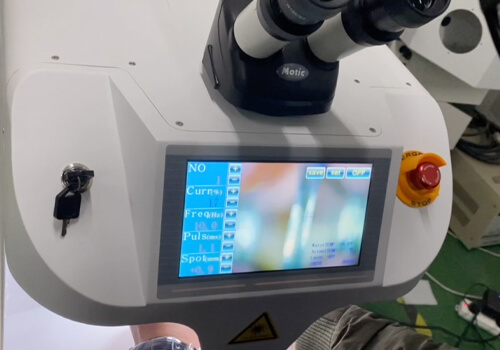
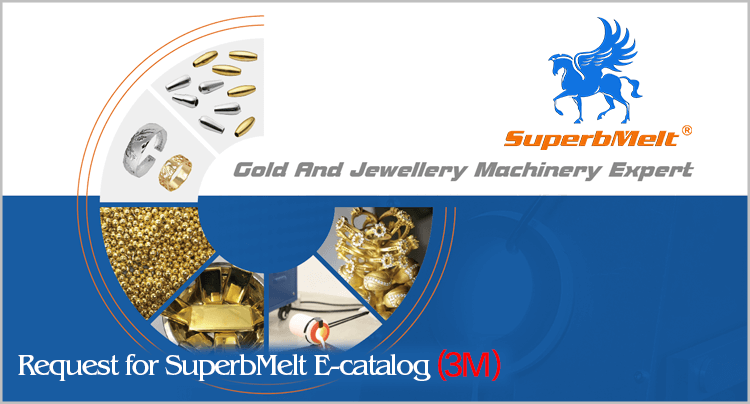
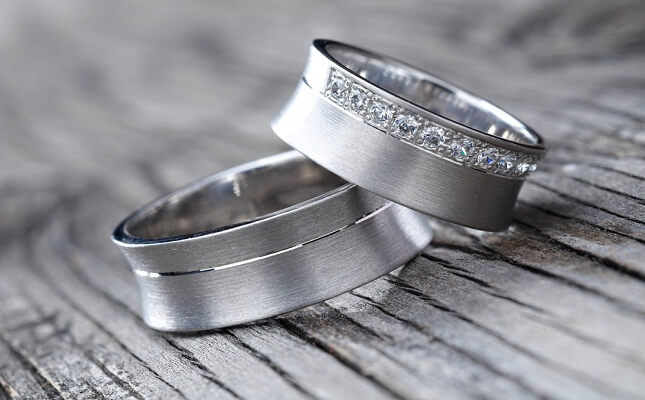
 © Copyright 2008-2021 Superb Electromachinery Co., Limited
© Copyright 2008-2021 Superb Electromachinery Co., Limited